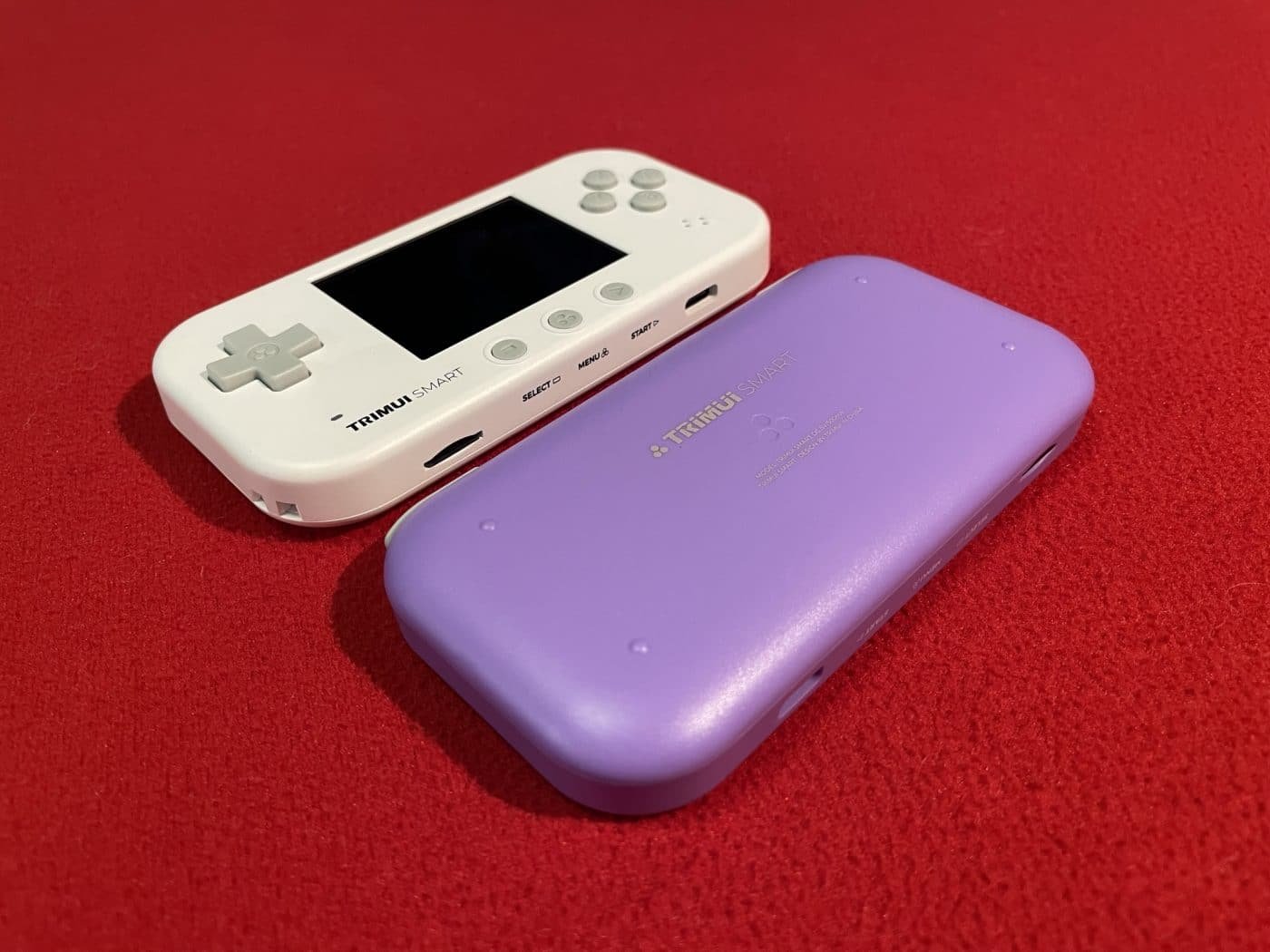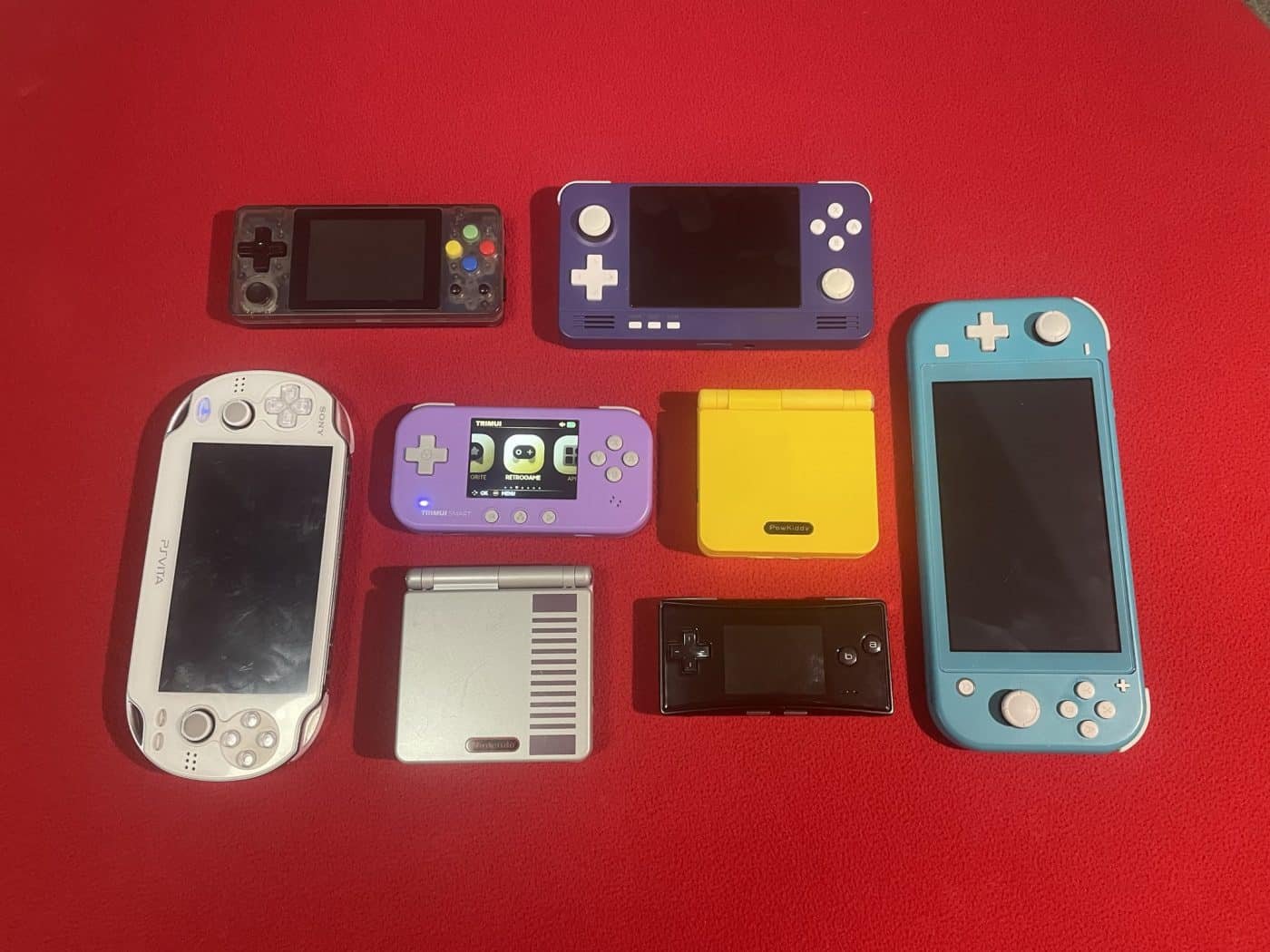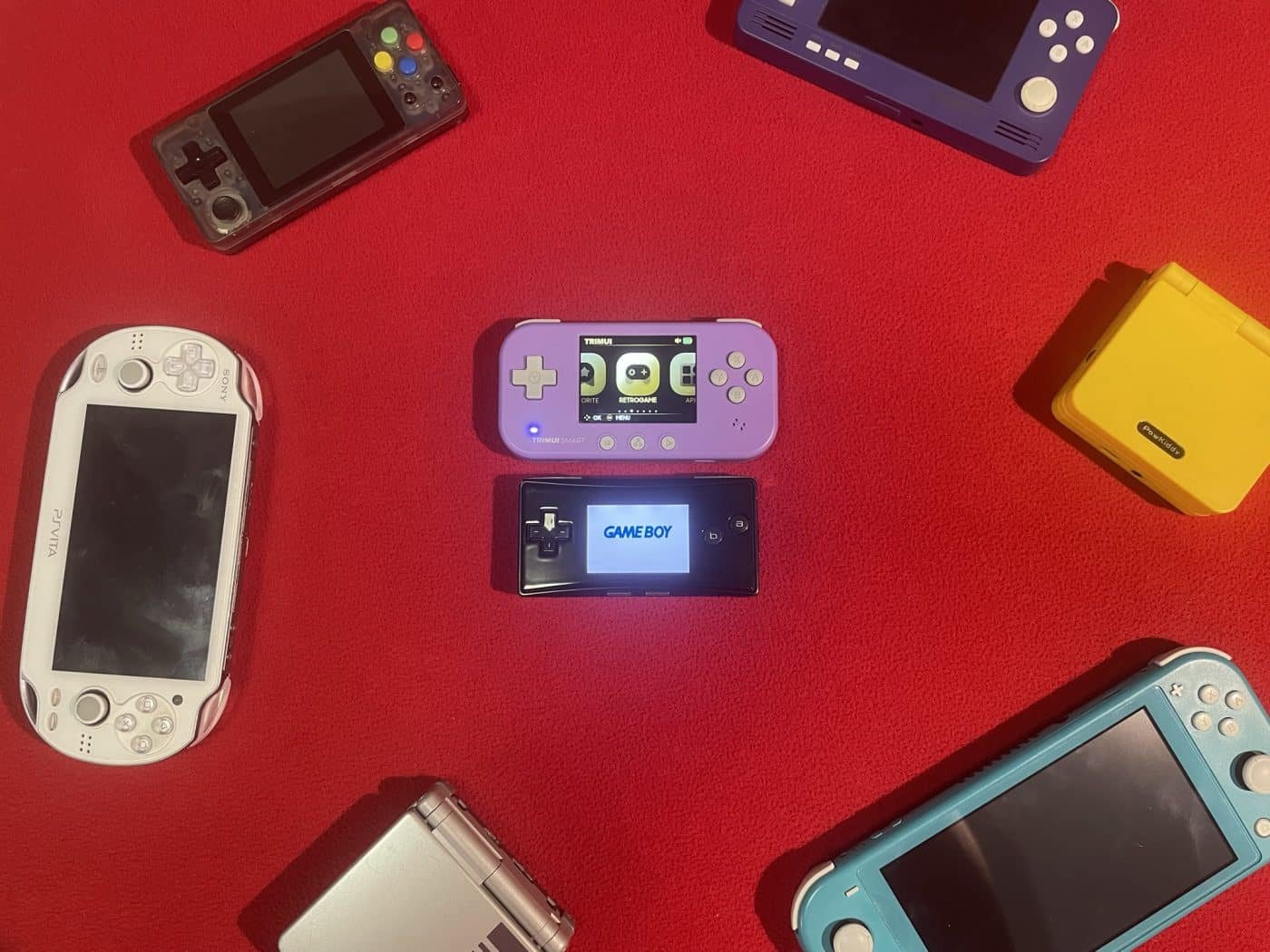The Trimui Smart is a surprisingly capable emulation machine for 8- and 16-bit games, but with a compact form factor comes a very compact screen.

Quick View
- Title: Trimui Smart
- Release Date: Fall 2022
- Price: Varies, but you'll probably be spending at least $70 with shipping
- Availability: KeepRetro.com, Amazon, and various AliExpress Sellers
Geek to Geek Media was provided with a review copy of this device.
The Trimui Smart is a new handheld from one of the quieter manufacturers of handheld emulation devices. Their prior device was the Trimui Model S, and bragged about its tiny form factor and retro, semi-transparent aesthetic.
The new system is just a tiny bit bigger and comes in a handful of bright, cheerful colors. The design aesthetic this time is much closer to the Nintendo Switch Lite, rather than throwing back to the translucent plastics of my youth. On top of the fresh visual design, the Trimui Smart boasts emulation capabilities up to the PS1, along with bells and whistles like Bluetooth and Wi-Fi for multiplayer gaming. Can they really pack that much into such a small profile?
Surprisingly… mostly yes!
Physical Form Factor

For some reason, a lot of these handheld emulation devices have really hard edges. I remember looking at the original Trimui Model S and deciding not to pick one up because, despite its small form factor, the 90-degree angles of the shell looked like they’d really dig into my palms. I have this issue with both the Retroid Pocket 2 and the LDK Horizontal, which makes longer play sessions really unpleasant.
Thankfully, the Trimui Smart has soft, curved edges on every side of the device. This thing is shockingly comfortable to hold. I’d say I’ve got pretty medium-sized hands, and this thing is more comfortable than any other handheld emulation device I’ve held. It might even be more comfortable than the GameBoy Advance SP, which is probably my favorite handheld gaming device of all time.
Limited Buttons

For input, there’s a menu button, start and select, a D-Pad, four face buttons, and two shoulder buttons. Every button feels really clicky and satisfying. It’s no mechanical keyboard, but I don’t think they were going for silent gaming when they put these buttons together.
Outside of the inputs, the device has a 2.4” screen, a power switch, a USB-C charging port, and a slot for an SD card where you’ll need to put your ROMs.

You might notice that there are a few things missing from the exterior of the device. There are no physical controls for screen brightness or volume control, though a combination of keys can adjust those while you are in the operating system, while you can change the volume in-game from a firmware menu. There’s also only one set of shoulder buttons, which is a tough sell on a device that claims to support PS1 games.
Playing with Power

The Trimui Smart runs a modified Retroarch operating system and emulation suite. Players are responsible for sourcing their own legally correct ROM files to play on the device, which can conveniently work with compressed files to save space on the included SD card.
To get a feel for how well the Trimui Smart can run, I tested out a variety of homebrew games for the NES, SNES, GB, GBC, and GBA.
For the tl;dr thoughts, this handheld runs all of those systems surprisingly well but doesn’t run any of them perfectly. I didn’t try out PS1 or any of the various arcade and other weirder systems it claims to work with because, well… it's missing buttons for PS1 and those other systems are weird!
Screen Issues

First up, I want to talk about the Trimui Smart’s always-good-but-never-quite-perfect screen. 2.4” is a very small screen. I spend most of my handheld gaming time on a GameBoy Advance SP, a PlayStation Vita, or a Nintendo Switch Lite. Shifting down to such a small display was tough, but the screen seems to be really sharp and I actually found it surprisingly readable, even in text-dense SNES games.
Unfortunately, the 320×240 resolution on the IPS LCD display never fits quite right. The GameBoy Advance is always my starting point for these handhelds, and it ran at 240×160. The problem, for those who don’t spend way too much time thinking of these sorts of things, is that you want to be able to scale an image up in whole numbers to keep things looking as accurate as possible. If you doubled the dimensions of a GBA image to 480×320, then each pixel of the original image could just become 4 pixels in the new version and it would effectively look the same. Without a whole value to multiple, things get muddied and weird.
Even the GameBoys before the Advance ran at 160×144, so even that image can’t quite be doubled on the Trimui Smart’s screen.
Emulation Evaluations

Finally, there’s the actual firmware and emulators that make things run. The Trimui Smart runs on what seems to be a modified version of Retroarch, so a lot of the emulation settings that you can play with will be very familiar to emulation veterans. I’m sure that with some tweaking the performance could be boosted quite a bit, but I honestly never really found that necessary.
GameBoy, GameBoy Color, and NES games all seemed to run perfectly on the machine, and every SNES or GBA game I tried was totally playable with just a few trade-offs. On the GameBoy Advance side of things, I found screen tearing and audio hiccups, but it was never consistent. We’re talking about an issue every minute or so of play, which in the grand scheme of things is almost nothing.
On SNES, I ran into those same issues along with visual glitches that seemed to have to do with transparency and layering in the game. Think of a JRPG menu causing the whole screen to get random static on it when it opens up. Annoying, for sure, but it never made things unplayable and only happened in some games.
The Firmware Wrapper

The operating system itself is mostly snappy and easy to use. The main menu lets you choose which system you want to play, then pick which ROM you want to launch. It’s a standard affair, with basically no bells and whistles… except for a jazzy background track that plays every time you turn the device on, even if you turn the volume off.
Finally, the Trimui Smart features Bluetooth and Wi-Fi to enable multiplayer play between devices. This is an absolutely awesome feature in a device like this, and they were kind enough to send me two of them to try it out… but I never got it to work.
Final Thoughts

I like the Trimui Smart a lot, but it's not quite an ideal device for me. The emulation works pretty darn well for what I want and the form factor feels great to hold. I just wish that the screen was a little bit bigger. If either the resolution or the actual size was a bit bigger, I think this would become my new standard for playing GBA games. As it stands, I will be keeping an eye out to see if any firmware updates make the emulation a tad better, but even then I think the screen will hold this one back the tiniest bit.

